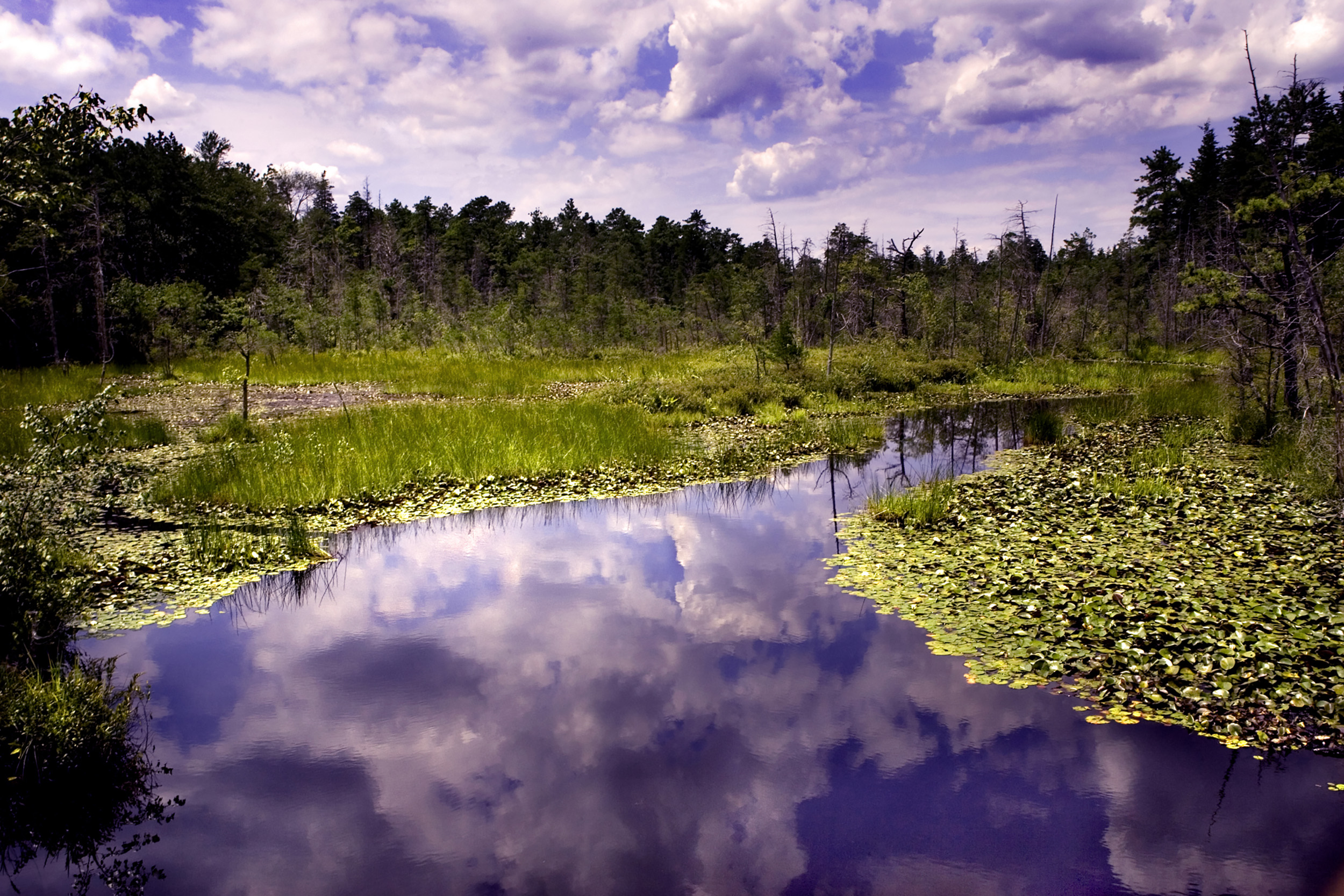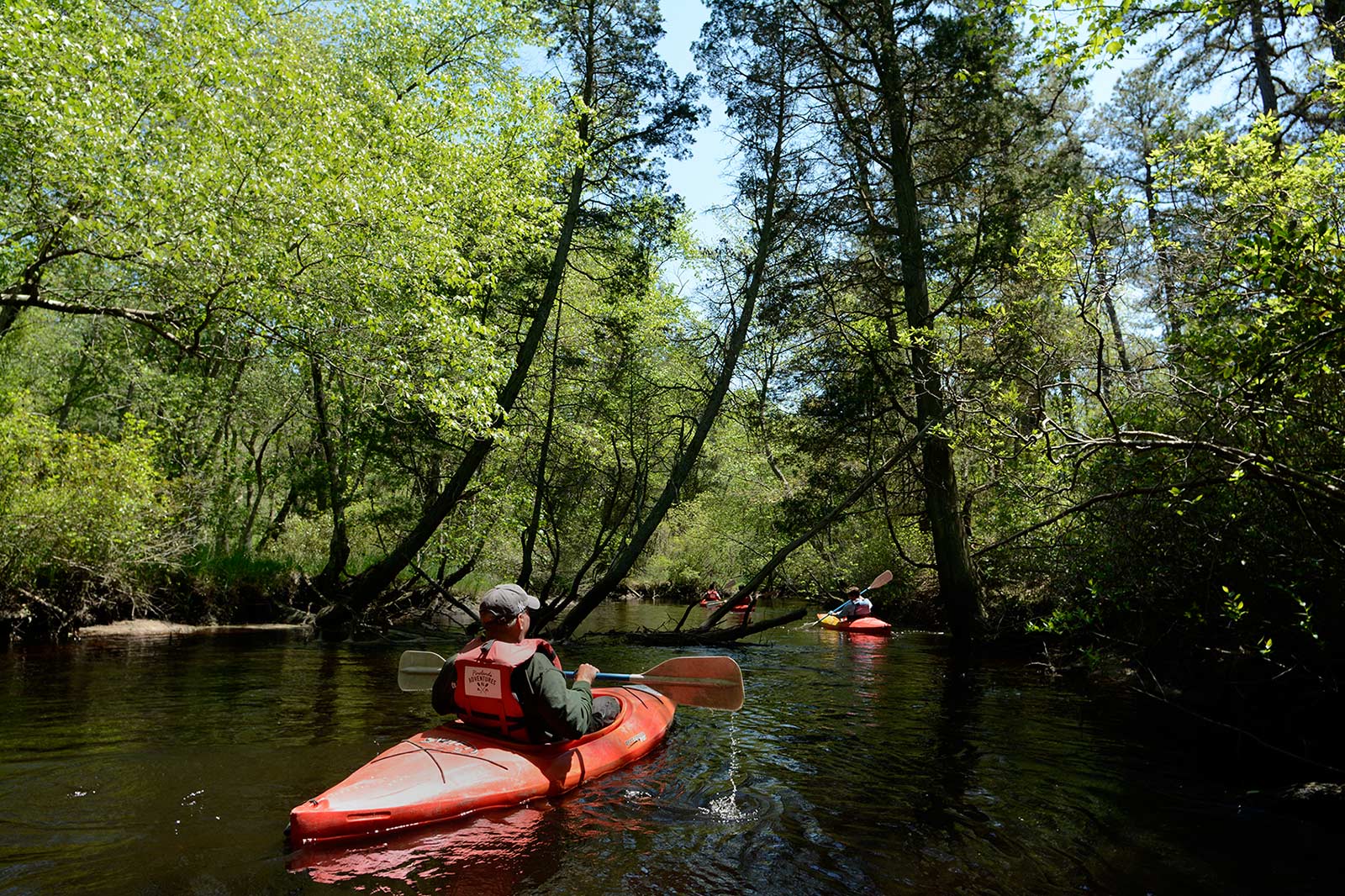
People in NewJersey still use the term, with variants such as "the pine belt," "the pinelands," and, most frequently, "the pines." Gradually, development of one kind or another has moved in over the edges of the forest, reducing the circumference of the wild land and creating a man-made boundary in place of the natural one. Settlers in the seventeenth and eighteenth centuries found these soils unpromising for farms, left the land uncleared, and began to refer to the region as the Pine Barrens. Technically, the Pine Barrens are much larger than the thousand or so square miles of them that remain wild, and their original outline is formed by the boundaries of a thick layer of sand soils that covers much of central and southern New Jersey-down the coast from the outskirts of Asbury Park to the Cape May Peninsula, and inland more than halfway across the state. The halfway point between Boston and Richmond-the geographical epicenter of the developing megalopolisis in the northern part of the woods, about twenty miles from Bear Swamp Hill. A line ruled on a map from Boston to Richmond goes straight through the middle of the Pine Barrens.

The Pine Barrens are so close to New York that on a very clear night a bright light in the pines would be visible from the Empire State Building. The people who live in the Pine Barrens are concentrated mainly in small forest towns, so the region's uninhabited sections are quite large-twenty thousand acres here, thirty thousand acres there-and in one section of well over a hundred thousand acres there are only twenty-one people. It is almost identical in size with Grand Canyon National Park, and it is much larger than Sequoia National Park, Great Smoky Mountains National Park, or, for that matter, most of the national parks in the United States. This area, which includes about six hundred and fifty thousand acres, is nearly as large as Yosemite National Park. In the central area of the Pine Barrens-the forest land that is still so undeveloped that it can be called wilderness-there are only fifteen people per squaremile. In parts of northern New Jersey, there are as many as forty thousand people per square mile. New Jersey has nearly a thousand people per square mile-the greatest population density of any state in the Union. Of the great unbroken city that will one day reach at least from Boston to Richmond, this section is already built. In and around the New Jersey corridor, towns indistinguishably abut one another. Railroads and magnificent highways traverse this crowded scene, and by 1985 New Jersey hopes to have added so many additional high-speed roads that the present New Jersey Turnpike will be quite closely neighbored by the equivalent of at least six other turnpikes, all going in the same direction. The corridor is one great compression of industrial shapes, industrial sounds, industrial air, and thousands and thousands of houses webbing over the spaces between the factories. West and north of the Pine Barrens is New Jersey's central transportation corridor, where traffic of freight and people is more concentrated than it is anywhere else in the world.


The picture of New Jersey that most people hold in their minds is so different from this one that, considered beside it, the Pine Barrens, as they are called, become as incongruous as they are beautiful. To the west, pines, oaks, and cedars continue all the way, and the western horizon includes the summit of another hill-ApplePie Hill-and the outline of another fire tower, from which the view three hundred and sixty degrees around is virtually the same as the view from Bear Swamp Hill, where, in a moment's sweeping glance, a person can see hundreds of square miles of wilderness. To the south, the view is twice broken slightly-by a lake and by a cranberry bog-but otherwise it, too, goes to the horizon in forest. To the east, the view is similar, and few people who are not native to the region can discern essential differences from the high cabin of the fire tower, even though one difference is that huge areas out in this direction are covered with dwarf forests, where a man can stand among the trees and see for miles over their uppermost branches. Occasionally, there are long, dark, serrated stands of Atlantic white cedars, so tall and so closely set that they seem to be spread against the sky on the ridges of hills, when in fact they grow along streams that flow through the forest. The trees are mainly oaks and pines, and the pines predominate. To the north, forest land reaches to the horizon. FROM THE FIRE TOWER ON BEAR SWAMP Hill, in Washington Township, Burlington County, New Jersey, the view usually extends about twelve miles.


 0 kommentar(er)
0 kommentar(er)
